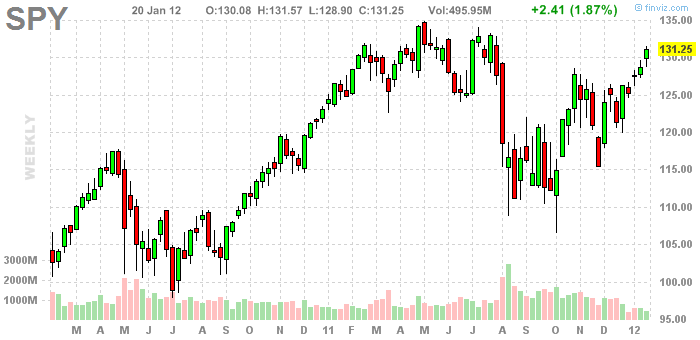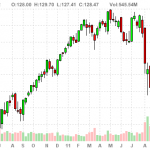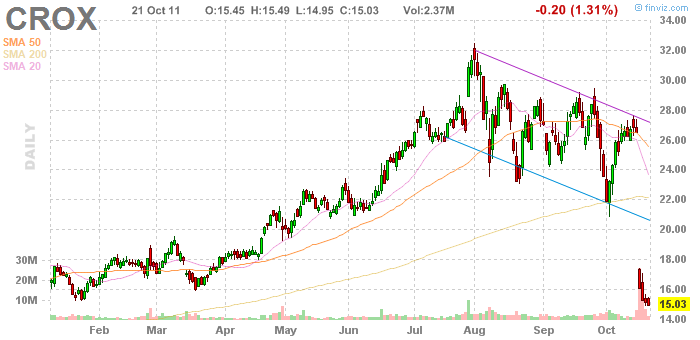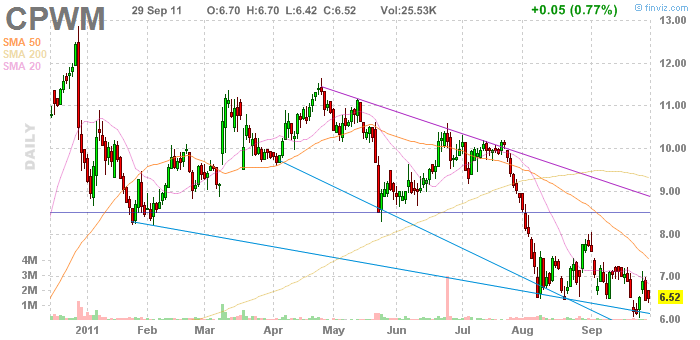In Performance Review on
19 March 2012 with no comments

Well, it’s March 19th, and this marks the two year anniversary of my posting trades on this blog.
As I wrote here in one of my very first posts, the inspiriation for the site was my grandmother, Edith Carlson, who would have been 116 today, but who died in 2001 at the age of 105. I still miss her very much, every day.
It was Edith who taught me about markets, which she loved to play and follow, and which she did very well in, even though she was not a “professional,” but spent her life in hard manual work.
I hope she would be proud of this site; after placing my first trade on March 19th, 2010, in two years I have run my starting capital of $10,000 up to over $23,300 — a two year gross profit of 133%.
On the other hand, I realize I have been all over the place with trading strategy. When I started, I was mostly placing swing trades of about 2 days to 2 weeks in holding time.
After a year of that, I more or less gravitated to options trading, and quickly to specializing in trading VIX options. Last summer’s losing trades on a “lazy man’s strategy,” which basically imploded when partisan brinksmanship almost caused a US default and sent the VIX soaring.
So I had to reevaluate again, and this year started selling SPY credits spreads every week on the weekly options market, ad then hedging my exposure with longer term SPY options.
So far, I’ve got a profit of more than $1,000 doing this, with seven profitable weeks against three losers. I’m not sure this will keep up, though, because premiums are selling so cheap with the constant grind upward we have had this year.
That could change at any time, though. And no matter what happens, I know that my first trading advisor, born in 1896, will be looking down from heaven and playing along.
In Trade deconstruction, Trades on
5 March 2012 with no comments
After two months of trading my market neutral “lazy-man’s” option strategy, my account has shown a profit of $1, 050.00, with starting capital of about $22,000 (not including margin), for a two month return of about 4.7%.
Nothing spectacular, but that’s in an enviornment of a constant upward grind, reducing fear and volitility, meaning I can’t sell my options spreads for very much. The ones I sold last Friday only fetched $2.05 each. With premiums low, I have to really thread the needle each week and get a flat market to make any short-term profit.
After hectic times at my job, I have finally updated the Trading Log. When you are busy at work, you really appreciate a strategy that calls for only one or two trades a week!
Of particular note, on February 17th (the February expiration date), I sold my April SPY hedges for net loss of $246.00 and replaced them June SPY 137 contracts. This is to try to take advantage of the low volatility by being able to buy longer term hedges. it should pay off when the market turns!
In Trades on
5 March 2012 with no comments
 A whopping number of new jobs resulted in an instant loss for my options strategy last week, as the S&P rose to the 1345 range on the jobs number Friday.
A whopping number of new jobs resulted in an instant loss for my options strategy last week, as the S&P rose to the 1345 range on the jobs number Friday.
That erased the money I had booked by selling weekly options spreads in the 131 SPYs. All told I had a $330 loss on the weeklies I sold last Friday.
That was buffered somewhat by my selling my April 131 SPY calls at at profit, and replacing them with the cheaper April 134 SPY calls.
And I turned around and put the same strategy on for next week too, selling three weekly 134 SPY spreads for a total credit of $2.23 each. No jobs report next Friday, yay!
In Trades on
27 January 2012 with no comments
The first month of trading with my new options strategy ended with modest success, as I managed to “thread the needle,” and have the SPY stay within 2 points of itself from last Friday to this Friday:

All in all, I added $450 to the bank as the weekly SPY 131 option spreads I sold last week for $2.23 each decayed to $0.73 today, for a profit of $150 per contract pair.
I turned around and sold more SPY weekly options for the next expiration on February 3rd: Three 131 calls, brought in $1.42, and three 131 puts brought in $0.90, for a total credit of $2.32 each, or $696 total.
Unfortunately, with the “grind up” market we have been seeing lately, premium prices are very small, so some more threading of the old needle will be needed to continue to book profits on this program.
In Trades on
20 January 2012 with no comments
The market’s rise to about 1310 this week meant that I absorbed a small loss on my short term SPY spreads; I sold three January 128 spreads for $2.29 last Friday, and bought them back for $3.08 today, all told a loss of $237.00.

I put the position back on with weekly SPY options for next Friday, selling three SPY 130 puts and calls for a net credit of $2.33 each.
On the long term side, I sold my three April 128 calls for $6.77 each, a profit of 0.99 cents on each contract, and replaced them with three April 130 calls bought at $4.79 each. So now I have a credit spread going on the long side, holding April 130 calls against April 128 puts.
We’ll see how this pans out by next Friday!
In Trades on
13 January 2012 with no comments
 In the first week of 2012……
In the first week of 2012……
In Uncategorized on
6 January 2012 with no comments
 A very Happy New Year to anyone who follows Cape Cod Doug, and I hope it will be a good one for you! Obviously, I haven’t been posting here much recently, as my work has overwhelmed me for much of the autumn of 2011, and my trading therefore ground to a halt.
A very Happy New Year to anyone who follows Cape Cod Doug, and I hope it will be a good one for you! Obviously, I haven’t been posting here much recently, as my work has overwhelmed me for much of the autumn of 2011, and my trading therefore ground to a halt.
A preliminary review of 2011 shows a trading profit of around 31%, which doesn’t match up to the 69% of 2010, but which certainly isn’t bad in a year where the S&P 500 was essentially flat. I will post a fully updated year end report in the trading log shortly, one that will account for commissions accrued.
With added work responsibilities this year, I am going to have to face facts and devise a new trading strategy that meshes with my availability and schedule. It’s going to be market neutral, and hopefully involve just one or two days where trades get placed each week, and which can be left a little more on auto pilot in the meantime.
So here goes — what we are doing is SELLING at-the money spreads on the WEEKLY S&P500 options market, and then rooting for them to decay over the course of the week (hoping for a flat market, in other words). To hedge this exposure, I am also simultaneously BUYING an equal amount of S&P spreads set to expire about four months out. The idea is that these, theoretically, will not decay as fast.
So, by way of example, with the market at 1280, today I sold three S&P Jan 13th 128 calls for $1.18 and sold three Jan 13th S&P 128 puts for $1.10 — a total credit to my account of $684, not counting commissions. Next Friday, I will buy these back, hopefully with them close to worthless.
As my longer term hedge, I also bought three S&P April 128 calls for $5.55 and three S&P April 128 puts for $596; a total outlay of $3,453 for the protection, again not factoring in commissions for the time being. The idea with these is to buy them in as the market moves, and try to minimize any decay.
This strategy is never going to produce a 100% profit in a year like I managed in the first year of this blog, but I’m hoping its less time consuming, and that it ultimately might produce a profit in the range of $1,000 a month over time.
I’ll keep my fingers crossed, and keep you posted!
In Trading Candidates on
21 October 2011 with no comments
The CROX trend looks cooked after earnings this week:

My kids still love ’em, though.
In Food for thought on
19 October 2011 with no comments
 The market crash of 1987 was twenty-four years ago today. Remember? I was studying for my law school entrance exams, not trading. But I can recall it was big news, dominating every television broadcast.
The market crash of 1987 was twenty-four years ago today. Remember? I was studying for my law school entrance exams, not trading. But I can recall it was big news, dominating every television broadcast.
“Older” people then could remember the Depression, but no one else had experienced a true “panic” in their lifetimes. It was also astounding to people how fast the market recovered, and how the country did not automatically go belly-up completely.
Anyone else remember the crash of ’87?
In Trading Candidates on
29 September 2011 with no comments
Not a good market lately for frilly consumer goods, as consumer confidence plunges into hibernation. Old friend Cost Plus tells the grim story:

Glad I dumped this one when I did!








